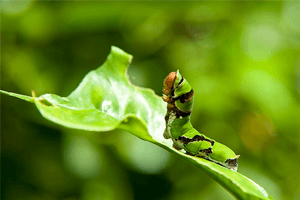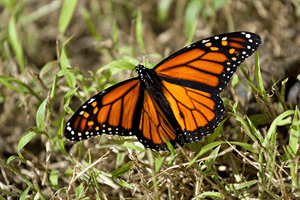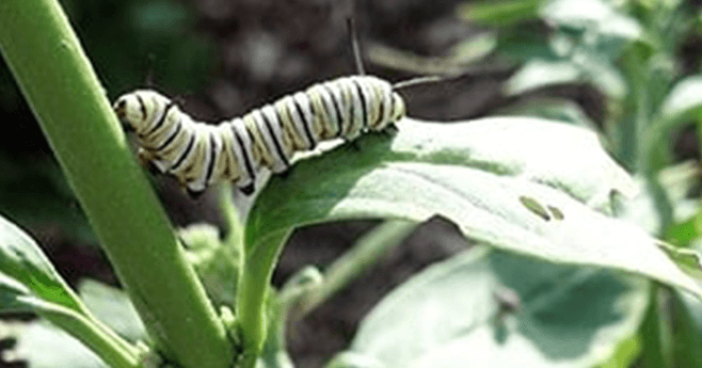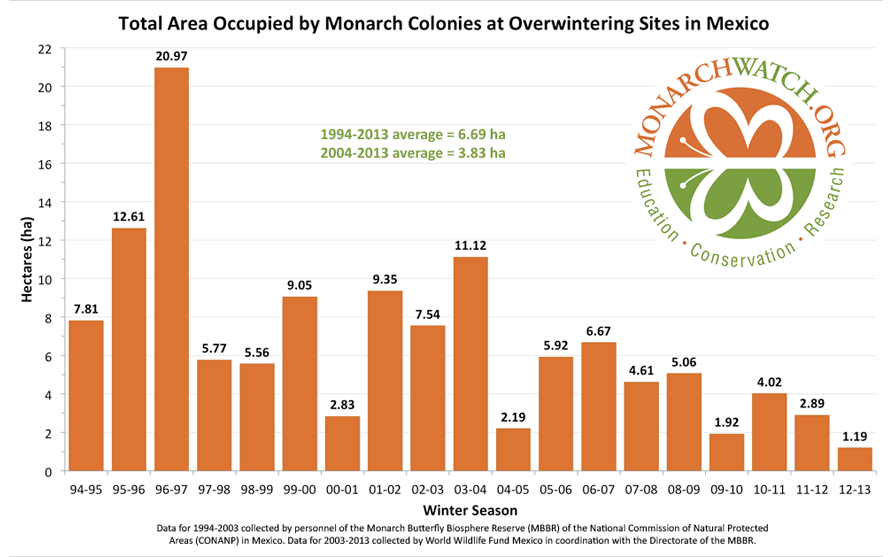The choices that we make on a daily basis can have a profound effect on our environment. Recently, my mom hired a landscape architect to spruce-up a very drab side yard and turn it into a relaxing garden. She wanted to replace a patch of sod with an eclectic mix of stone, bark, flowering plants, a fountain, a decorative bench and a rocking chair. These are the things one would expect to find in a quaint little Italian style garden.
 Just before the side yard was magically transformed into a beautiful oasis, the landscape architect told my mom that she was going to plant a few milkweed plants at no charge. My first thought to this was, “Really, shouldn’t she get rid of those nasty weeds? Farmers spray to eradicate this plant and now she wants it in my yard.”
Just before the side yard was magically transformed into a beautiful oasis, the landscape architect told my mom that she was going to plant a few milkweed plants at no charge. My first thought to this was, “Really, shouldn’t she get rid of those nasty weeds? Farmers spray to eradicate this plant and now she wants it in my yard.”
As a biologist, I know that milkweed is the host plant for Monarch Butterflies (Danaus plexippus). They eat the plant and sequester cardenolides, a type of steroid that makes the Monarch Butterfly toxic. In the 10-years that I have lived in my house, I have only seen one or two Monarch Butterflies. It’s not like I have a flock of butterflies that will devour these plants, I doubted that the butterflies would even find the plants. So, I guess a few milkweed plants in the side yard wouldn’t be that bad after all.
While I was away on a field trip, the landscape crew came and transformed the side yard into a beautiful Italian style garden. I spotted a couple of milkweed plants nicely tucked away in the side yard at very inconspicuous pockets. I told myself that I can live with these around my yard. I barely noticed them until I spotted others scattered throughout my property. Not only did they put them in my side yard, but now I have them everywhere!
I started to feel irritated at that point. It was nice when I had a few hidden milkweed plants in a side yard, which I would probably never see. But since they are now everywhere, all I could think of saying was, “Thanks for the free weeds.”
Later that day, I heard on the local news that the Monarch Butterfly population has hit an all time record low. There has been a significant decline in Monarch Butterfly numbers since 2010. The main factor in the decline includes a series of dramatic weather conditions and deforestation. This butterfly is known to overwinter in large colonies, often associated with coniferous trees. In other words, one bad storm could wipe out a whole generation of butterflies.
Source: monarchwatch.org
Within a few weeks, I noticed that the milkweed plants were being eaten by other insects. I realize that I have to protect the plants from pests, hoping that there will be enough food left for a wandering Monarch or two that may, by accident, venture into my yard looking for food.
 Afterwards, I began looking for the culprit to put an end to the destruction of my weeds and then I saw the first Monarch Butterfly caterpillar munching away at my plant. Each plant had about 10 to 15 caterpillars all at variousstages of development. Within a few months, I had Monarch Butterflies all over my yard.
Afterwards, I began looking for the culprit to put an end to the destruction of my weeds and then I saw the first Monarch Butterfly caterpillar munching away at my plant. Each plant had about 10 to 15 caterpillars all at variousstages of development. Within a few months, I had Monarch Butterflies all over my yard.
Overall, I think my yard produced around 30 to 40 Monarch Butterflies. It is ironic how once an unwanted weed had turned into the most productive plant in my yard. Can you imagine what would happen if there were more people who opt to plant milkweeds in their yards? If everyone would start doing this, then we may be able to keep the Monarch Butterflies off the Endangered Species List and give them a fighting chance.
For more information regarding sensitive and endangered species, download our free Species Calendar, which provides survey protocol guidelines for some of the most common focused surveys in Southern California. For additional information, simply click on the link below to speak to one of our experts.






